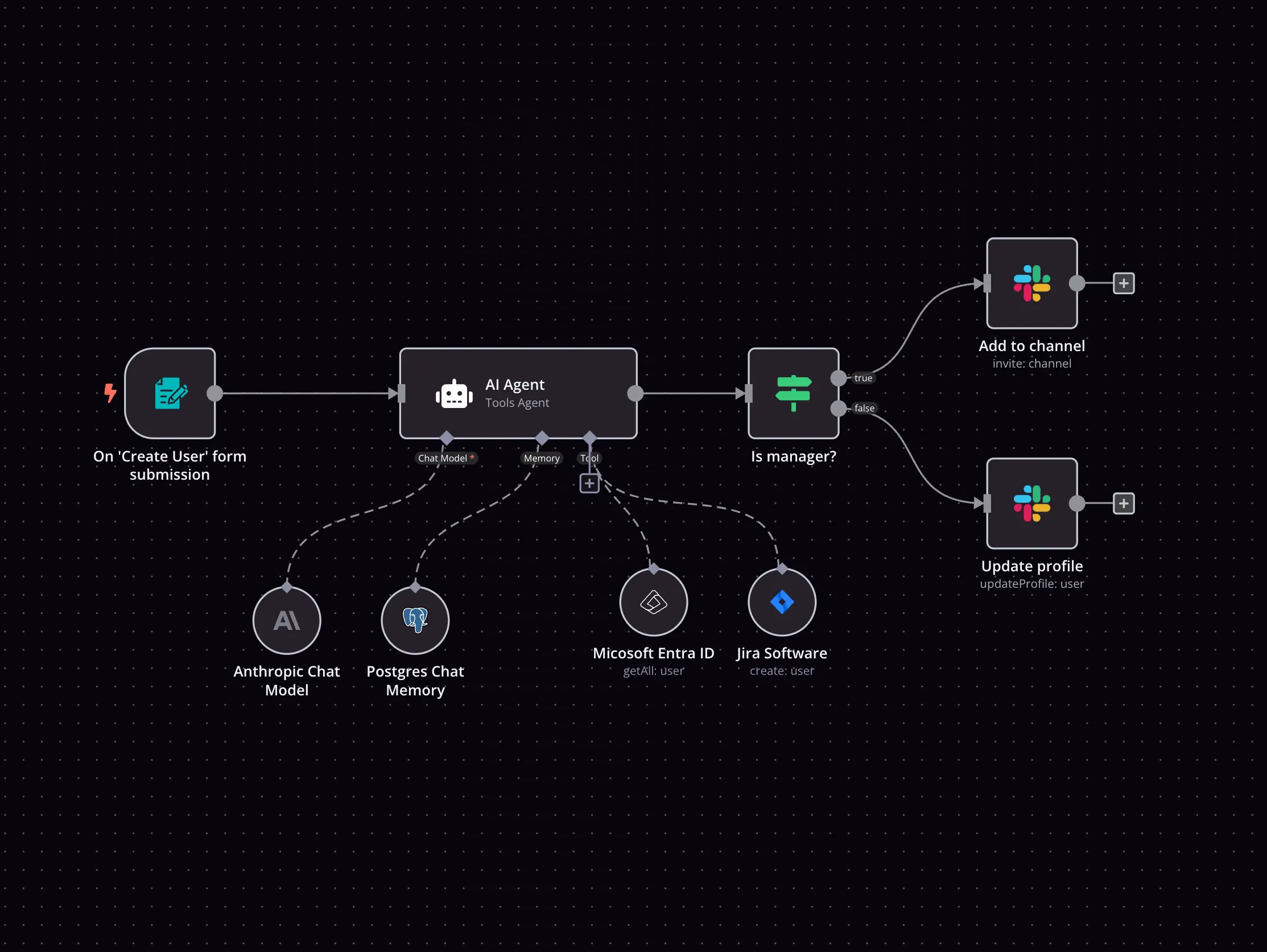Gmail and HTTP Request integration
How to connect Gmail and HTTP Request
Create a new workflow and add the first step
In n8n, click the "Add workflow" button in the Workflows tab to create a new workflow. Add the starting point – a trigger on when your workflow should run: an app event, a schedule, a webhook call, another workflow, an AI chat, or a manual trigger. Sometimes, the HTTP Request node might already serve as your starting point.
Popular ways to use the Gmail and HTTP Request integration
✨🤖Automate Multi-Platform Social Media Content Creation with AI
Automated Web Scraping: email a CSV, save to Google Sheets & Microsoft Excel
✨🩷Automated Social Media Content Publishing Factory + System Prompt Composition
Invoice data extraction with LlamaParse and OpenAI
Analyze Any Website with OpenAI And Get On-Page SEO Audit
AI-Generated LinkedIn Posts with OpenAI, Google Sheets & Email Approval Workflow
Build your own Gmail and HTTP Request integration
Create custom Gmail and HTTP Request workflows by choosing triggers and actions. Nodes come with global operations and settings, as well as app-specific parameters that can be configured. You can also use the HTTP Request node to query data from any app or service with a REST API.
Gmail supported actions
Add Label
Delete
Get
Get Many
Mark as Read
Mark as Unread
Remove Label
Reply
Send
Send and Wait for Response
Create
Delete
Get
Get Many
Create
Delete
Get
Get Many
Add Label
Delete
Get
Get Many
Remove Label
Reply
Trash
Untrash
Gmail and HTTP Request integration details
Gmail and HTTP Request integration tutorials

6 e-commerce workflows to power up your Shopify store
Want to power up your online business and win back time? Discover how no-code workflow automation can help!

15 Google apps you can combine and automate to increase productivity
Learn how to combine and automate popular Google apps for more productivity in the workplace.

Using automation to boost productivity in the workplace
Instead of using IFTTT or Zapier, which can be pretty limiting on a free tier, I decided to try n8n, which is a fair-code licensed tool.
FAQ
Can Gmail connect with HTTP Request?
Can I use Gmail’s API with n8n?
Can I use HTTP Request’s API with n8n?
Is n8n secure for integrating Gmail and HTTP Request?
How to get started with Gmail and HTTP Request integration in n8n.io?
Need help setting up your Gmail and HTTP Request integration?
Discover our latest community's recommendations and join the discussions about Gmail and HTTP Request integration.

How do I remove n8n Email footer in Gmail node send message?
jake chard
Each email sent has “This email was sent automatically with n8n” in the footer or after the email. How do I remove this please?
Open topic

Sending attachment via Gmail
Jan Koch
Describe the problem/error/question I am trying to send an email with an attachment using the Gmail node and get an error that I don’t understand. I am able to download that file from the original email and upload it to …
Open topic

Gmail Trigger - How to ignore?
Paul Kennard
I am new, so I am as interested in any recommendations on how to find the answer as I am the actual answer. I built a workflow that involves the Gmail Trigger - specifically, when someone emails me and the subject matche…
Open topic

Google Verification Denied
Moiz Contractor
Describe the problem/error/question Hi, I am getting a - Google hasnt verified this app error. I have Enable the API, the domain is verified on the Cloud Console, the user is added in the search console and the google do…
Open topic

HTTP request, "impersonate a user" dynamic usage error
theo
Describe the problem/error/question I a http request node, I use a Google service account API credential type. I need the “Impersonate a User” field to be dynamic, pulling data from the “email” field in the previous nod…
Open topic
Looking to integrate Gmail and HTTP Request in your company?
The world's most popular workflow automation platform for technical teams including
Why use n8n to integrate Gmail with HTTP Request
Build complex workflows, really fast


